Innovations continue to break through various industries, and orthodontics is no exception. There are newer, easier, and better ways to help you achieve that picture-perfect smile without having to take a huge chunk of time out of your daily life. Plus, these options don’t come with the discomfort and pain associated with traditional straightening methods. Case in point – clear aligners.
You may have heard about invisible aligners and wondered what all the fuss is about. If you have crooked teeth or a malocclusion, consult your orthodontist to see if this is a suitable option to address your condition.
In the meantime, read on to learn more about this teeth-straightening solution, including how much you might have to shell out.
What are clear aligners?
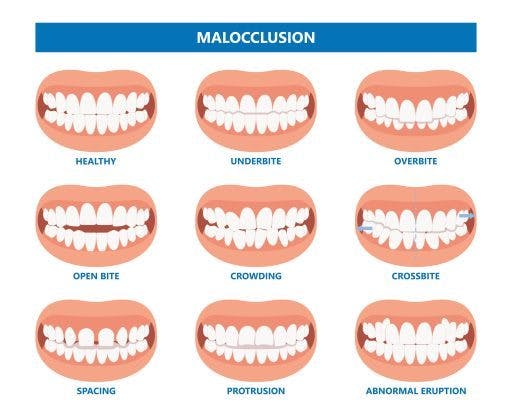
In a nutshell, clear aligners are a viable alternative for those who want straighter teeth without going for traditional metal braces. Think of hi-tech mouthguards but thinner, colourless, and virtually invisible. Aligner trays usually comprise BPA-free plastic and are tailor-made for each patient.
An orthodontist studies your dentition and creates aligners to push your teeth slowly and surely towards the right direction. As the treatment progresses, you switch to new trays to address the changes in your alignment.
These appliances might take some getting used to, with patients reporting feeling pressure or discomfort at the start.
What dental problems can be fixed with clear aligners?
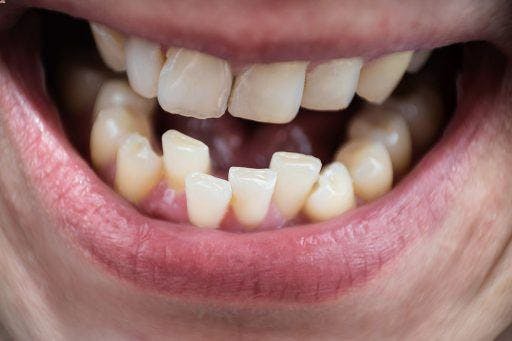
By gradually moving teeth into the proper position, clear aligners improve your smile and oral health by reducing the risk of tooth decay and gum disease associated with crooked teeth. Here are some issues that they can resolve.
- Crowded teeth or overlapping teeth
- Diastema, or a gap between your teeth
- Overbites, where the upper front teeth overlap with the lower front teeth
- Underbites, where the bottom teeth extend forward
- Other malocclusions, such as excessive overjet and crossbites
Benefits of clear aligners

If you and your dentist agree that you’re the right candidate for aligners, it’s good to know all the benefits that come with it:
1. Aligners look more subtle.
Clear aligners are usually made of transparent, medical-grade, top-of-the-line plastic material that fits over your teeth, mimicking their shape while subtly straightening them. They are much less visible than metals and elastics.
2. Oral hygiene is easier.
With traditional braces, you must brush between the wires, springs, and hooks to ensure no food or debris is hiding between the crevices. Aligners are fully removable, allowing you to clean the trays and your teeth easily.
3. You can visualise your treatment journey.
All dental professionals certified with ClearCorrect utilise ClearPilot, a proprietary digital planning tool that maps out effective and customised treatment plans. It empowers you, the patient, to visualise and understand every step of your treatment.
4. Aligners are more comfortable.
Aligners do take some getting used to, but these high-grade plastic appliances are much more comfortable than brackets and wires, which may catch your gums.
However, aligners do have some disadvantages. Their detachability puts a heavy responsibility on the wearer – from the commitment of keeping them on for the prescribed number of hours to keeping them safe. They also cost a pretty penny, which may entail a heavy dent in your pocket should you lose them.
Lastly, aligners can solve a multitude of malocclusions, but more complex cases may be better addressed with traditional braces.
Clear aligners vs. braces
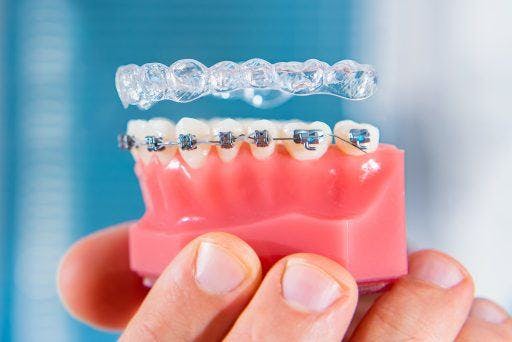
So what’s the difference between traditional metal braces and clear aligners? Both teeth-straightening devices serve a specific purpose and market. Braces, which use metal wires, bands, and brackets, are highly versatile and can treat even extreme misalignment cases. They are also fixed to your teeth, so you have zero chance of misplacing them.
However, braces can come with greater discomfort. You must eat soft food during the first few weeks to manage soreness and pain. You must see your orthodontist more often for adjustments, as well as to replace missing or broken parts. Teeth cleaning also becomes more intricate, requiring special brushes and extra attention to ensure you cover every corner.
If you are put off by the look of braces, there are more subtle options, such as ceramic or clear braces, or even lingual braces, which are bonded behind your teeth. The latter, however, can put a dent in your wallet and may cause a slight lisp.
On the other hand, clear aligners are removable, which means you can pull them out when you brush your teeth and eat. However, to maximise their effect, you must keep them on for 20 to 22 hours a day. You will also need to take extra care not to lose them.
How much are clear aligners?
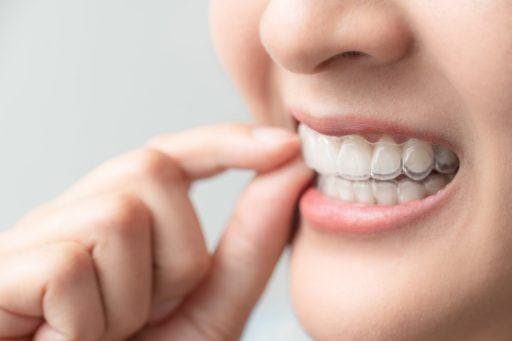
The benefits of clear aligners are pretty, well, clear. But how much would these advantages set you back?
On average, a full treatment would range from US$4,500 to US$8,000 in the United States (A$6,000 to A$9,000 in Australia), depending on your condition and the professional rates of your dental practitioner.
How long do clear aligners take to straighten teeth?
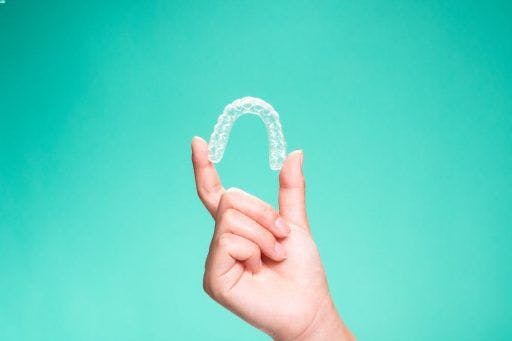
Thanks to cutting-edge engineering, ClearCorrect works better than most aligners. Born from decades of material science, research, and innovation, the ClearCorrect system is engineered for precision, comfort, and aesthetics. It has a high, flat, unscalloped trimline and a tri-layer ClearQuartz material composed of resilient polymers and an elastomeric centre. The latter detail gives it an elasticity that provides comfort while applying force to push the teeth in place.
ClearCorrect’s features allow flexibility for your orthodontist to formulate a personalised treatment plan. The brand’s customisable engagers, bite ramps, and cutouts help address all conditions.
That said, to ensure you get the most out of the treatment plan, you’ll need to keep your eye on the time. It’s important to wear your aligners for 20 to 22 hours a day, removing them only during mealtimes, when drinking fluids other than water, and when brushing your teeth.
Your orthodontist will recommend when you should replace your trays – which is usually around every two weeks. Each aligner has minute differences that apply gentle pressure to the rogue teeth.
Depending on the severity of your malocclusion as well as your commitment, aligner treatment can take anywhere from six to 18 months. Find out if aligners are a viable option for your dental needs with this online smile assessment.
Are clear aligners really invisible?
Aligners are designed to be more discreet than traditional braces. With their transparent material and customised shape, they’re quite subtle.
Keep in mind, improper maintenance can speed up wear and tear. As mentioned earlier, you must avoid wearing your aligners while eating or drinking anything that’s not water. You should also clean your aligners regularly with hydrogen peroxide, baking soda, antibacterial soap, white vinegar, non-abrasive toothpaste, or aligner-specific cleaning solutions.
ClearCorrect’s stain-resistant properties have been tried against leading aligner brands. In a test where top aligners were immersed in wine, cola, mustard, and coffee for 24 hours, ClearCorrect emerged as the clear winner.
How to choose the right aligners
There are two major considerations for choosing aligners – cost and lifestyle. Aligners are not the cheapest teeth straightening option, but they represent an investment where prioritising quality over price is crucial. Not only are premium brands like ClearCorrect more effective, but they’re safer, too.
You should also ask yourself if you can maintain the commitment needed for aligners to work. Can you ensure you wear your aligner for the recommended time each day? Are you meticulous over oral hygiene?
Most of all, you should consult your orthodontist for the most viable treatment plans.
FAQs about clear aligners
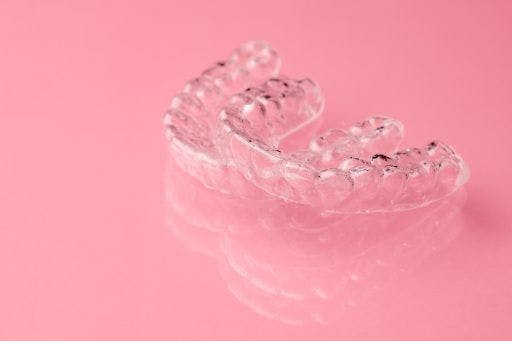
If you’re still wondering if clear aligners are for you, here are some frequently asked questions that may make your decisions clearer.
Can you sleep with clear aligners?
Absolutely. Your dentist will recommend that you wear them from 20 to 22 hours daily. But don’t worry, you can take them off while eating or brushing your teeth.
Is there an age limit for clear aligners?
There’s no maximum age for undergoing clear aligner treatment, especially since your teeth tend to shift as you age. However, most experts believe that your early teens are the best time to address dental crookedness or misalignment since your jaw is more receptive to change.
Are aligners painful?
Every new tray is designed to slowly shift your teeth closer to the desired position. There might be some discomfort, but ClearCorrect’s innovative flexible inner layer applies 1/3 less initial force, enhancing patient comfort during treatment.
Can you kiss with clear aligners?
Yes, you can kiss with clear aligners. The only time you need to take them out is for eating and drinking fluids that aren’t water.
Will your teeth “relapse” after clear aligners?
The most severe treatments usually last three years. You may also need to wear retainers to help hold your teeth in place. However, if you are diligent about wearing your aligners, follow your orthodontist’s recommendations, and practise proper dental hygiene, you shouldn’t worry.
Can clear aligners change your face shape?
This is one of the most common myths about teeth straightening. Undergoing aligner therapy can have a minor impact on your facial profile, but a major transformation will typically require surgery and other cosmetic procedures.
The decision between clear aligners and other treatment options is up to you and what your dentist recommends. Either way, there’s something very exciting about taking the first step to straight teeth. Remember – straightening is only one part of having a great smile, as practising proper dental hygiene is a must, too.



